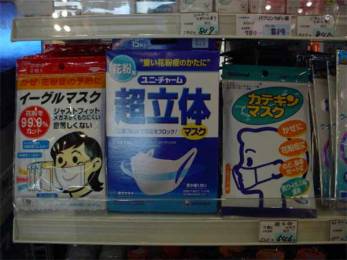
Healthcare, medicine & pharmaceuticals
Too much medicine?
Back in the late 1980s, the 'hygiene hypothesis' was put forward to explain the epidemic of allergies that were affecting children. The idea was that the lack of childhood infections (caused by too much vaccination and too many antibiotics) was damaging children's well-being. As a result, children's immune systems overreacted when exposed to otherwise harmless allergens. This hypothesis is now being replaced by a new theory that argues that while a lack of early childhood infections may have an influence, it is the lack of exposure to common microbes that is really the culprit. In other words our houses (and children) are too clean for our (and their) own good. Given that the incidence of allergies is much lower among people who grow up on farms, perhaps in the future we will see 'dirt holidays' where children are exposed to farmyard animals, dirt and filthy water. Or perhaps you'll be able to buy aerosols of common bugs in the supermarket to spray on kitchen surfaces, baths and children.
Ref: New Scientist (UK), April 2005. 'Love your bugs'. www.newscientist.com
Effective, elective, enhancement surgery
Why is it that in professional sports steroids are banned but enhancement surgery is perfectly legal? Repairing damage to a ligament has been standard practice for more than a quarter of a century, but new surgical and medical procedures are now blurring the line between repair and enhancement. For example, in professional sports wearing contact lenses is not regarded as cheating, but what if a major league baseball player had eye surgery specifically to improve his vision and hence his batting average? Or what if a perfectly healthy tennis player had a new heart and surgically enhanced forearms purely to improve his game? These are questions that sports and medical ethicists will have to answer in the coming years due to the convergence of three major trends. First, the financial rewards for top athletes are now so large that any edge that medicine can give are worth pursuing. Second, chemical enhancements, such as the use of steroids, are increasingly easy to trace, so sportsmen and women are looking at other options to lift their game. Finally, new surgical innovations will blur the line between man and machine with the result that, like drivers of Formula 1 cars, natural abilities and training will only be half the story. The rest of the performance will be down to the quality of the 'engineering'.
Ref: Wired (US) March 2005. 'A cut above', S. Johnson www.wired.com
A sunny disposition
A study by a group of researchers at Harvard School of Public Health (US) has found that recovery rates for cancer patients who underwent operations were twice as high if operations had taken place during the summer months. The study of 456 people found that those who had operations during the sunny summer months were far more likely to be alive five years later than those who had operations during the dark winter months. The reason is thought to be due to vitamin D levels caused by sunshine. Another study into recovery rates for eye surgery in the UK came to a similar conclusion a few years ago and the research also coincides with other recent studies that claim exposure to the sun's rays is not as harmful as previously thought.
Ref: The Times (UK) 23 April 2005. 'Sunlight cancer cure', J.NASH. www.timesonline.co.uk
Blood pressure devices
A small battery powered device called a Rheos is the latest weapon to be invented in the US in the fight against high blood pressure. Traditionally, the solution to high blood pressure has been the prescription of hypertension drugs but the new implant (currently undergoing clinical trials in the US) offers sufferers an electronic alternative. The pacemaker style device is implanted close to the carotid artery in the neck and regulates how far the body's blood arteries and vessels are open by influencing the brain's own control mechanism, which in turn reduces blood pressure. Alternatively you could just drink lots of cranberry juice. A study in the US has found that regular consumption relaxes the blood vessels and reduces blood pressure - at least in pigs it does.
Ref: Eureka Alert (US) 1 April 2005. 'Implanted medical device aims to lower blood pressure'. www.eurekaalert.org
From fast followers to true innovators
When it comes to pharmaceuticals, India has traditionally been the home of patent infringement due to the country's weak or non-existent Intellectual Property (IP) laws. This has allowed Indian companies to produce cheap versions of drugs developed in other countries, often bringing products to market before their regulation bound western counterparts (a copy of Viagra was launched in India before Pfizer launched the 'official' version in the US). There have been some local innovations, for example the development of fixed dose combination pills for HIV, which make it easier for forgetful patients to remember their otherwise complex treatment plans. Another example of local adaptation was the development of a tablet form of the antibiotic amoxycillin. The original (patented) version was a liquid developed by GlaxoSmithKline, but this needed refrigeration.The local version, in contrast, could be stored dry and dissolved in water when required. So what's new? As a result of signing a World Trade Organisation's IP treaty, India is now required to honour international IP agreements. This means a shift towards true innovation. Historically Indian pharmaceuticals companies spent a mere1.9% of sales on R&D compared to typical rates of 10-16% in the West. But this is changing. Total spending on Indian pharmaceutical R&D was US $45 million in 1997 but this had risen to US$150 by 2003. The other reason for this shift towards a more traditional R&D model is China, which is to some extent the new India when it comes to the production of low cost generic drugs and patent infringements.
Ref: Red Herring (US) 14 March 2005, Online. 'India's Innovators: Copycat no more'. www.redherring.com
